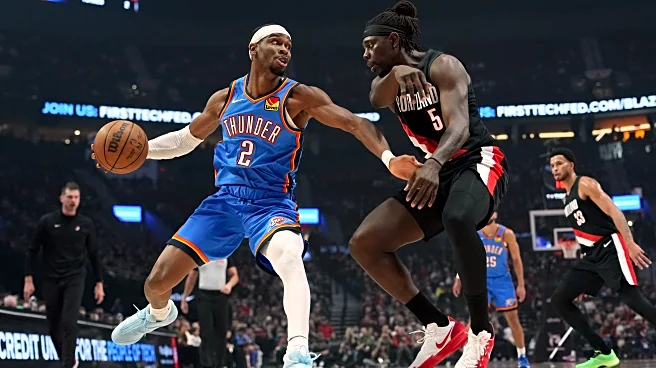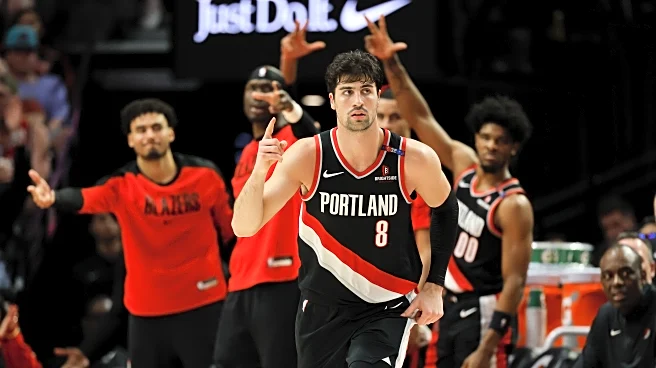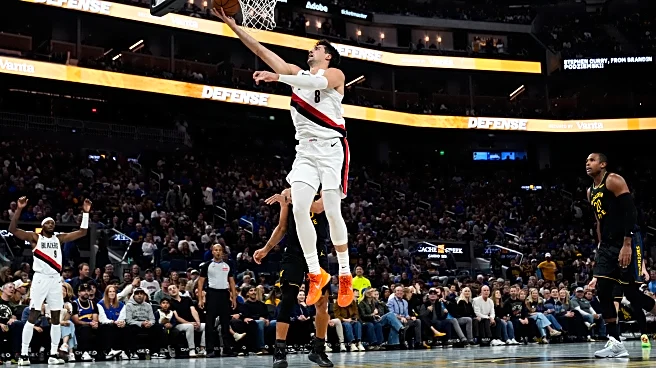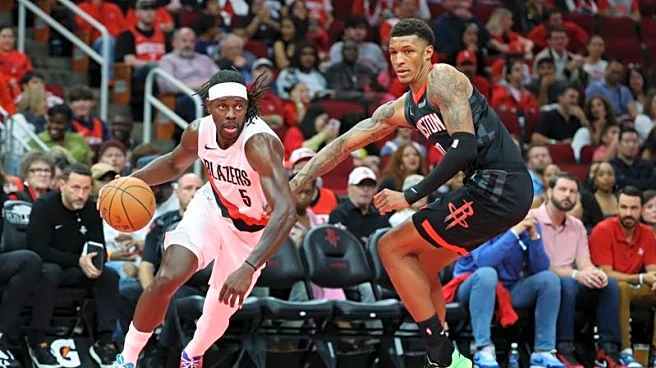Portland Trail Blazers rookie Yang Hansen has had a colorful start to his NBA career. Hansen has shown brilliance with the Rip City Remix, Portland’s G League affiliate. He’s demonstrated slightly less
confidence on the main roster, playing only intermittently while becoming the de facto fourth option at center. It’s been a year of ups and downs.
Intermittent hiccups at the beginning of Hansen’s developmental cycle have caused a little bit of concern for Blazers fans, as shown in this question from the Blazer’s Edge Mailbag.
Dave,
Tell me what the Blazers or anybody see in Hansen Yang because I just don’t see it. He’s not ready to play. When I look at other of this year’s rookies I’m seeing contributors. But where is Hansen? I won’t use the b-word yet but I’m shaking my head already.
Ben
Let’s affirm the valid points in what you’re saying first:
- Yang Hansen isn’t playing much. He’s averaging 8.5 minutes per game over 8 appearances.
- He isn’t producing that well. He’s shooting 32.3% from the field and his per-minute rebounding numbers are tepid. Passing is one of his main gifts but his assist-to-turnover ratio at this early juncture is flatlined.
- Other rookies selected around Portland’s original draft position–Cedric Coward and Derik Queen, in particular–are already contributing more than Hansen.
But jeepers, if you can tell what Yang Hansen is going to be after only 68 minutes of total playing time, you’re a better evaluator than I.
Right now, it looks like Hansen possesses the exact qualities the Blazers drafted him for: reasonable mobility for his size, the aforementioned passing ability, and decent, rudimentary footwork and face-up shooting skills. He’s not gone anywhere yet–heck, he’s not even hitting basic shots–but you can see the bridge from here to there.
In order to improve, Hansen will need to cut down his read-reaction time, learn to use his body for leverage, work on a bankable finishing move, improve his distance shooting, and just get comfortable in his own skin on an NBA court.
Crossing that bridge takes a while for many rookies. Point guard is traditionally considered the hardest position to develop but center is second. Point guards at least have the luxury of controlling the ball and being able to score points to cover their growing pains. A player like Hansen has no such luxury. You’re seeing every mistake he makes in full, 7’1, cinematic glory. He only has two states of being: invisible and exposed. That makes him easier to condemn than, say, a player like Kris Murray who also stumbled out of the gate as a rookie. Aside from the occasional three, Murray’s blunders were well-disguised. Hansen’s are on full display.
We could wrap up this Mailbag right now by sharing the advice that I often finish with: give it time. Fans are super impatient. It’s the nature of the beast. Not every player blossoms, but most deserve a chance. Hansen hasn’t had his yet.
Your question brings up a bigger point that’s too interesting to skip over, though.
The Blazers drafted Hansen with (in essence) their lottery pick in 2025. Portland drafted center Donovan Clingan with their 2024 lottery pick. Hansen is still in development. Clingan has turned into a serviceable starter but he hasn’t progressed beyond that yet. He’s great at the things he does well but some of his weaknesses are getting exposed in his second season.
Let’s follow down the track you started with this question. Let’s say Hansen doesn’t turn out great. Let’s also say Clingan is decent but ultimately unremarkable, the kind of guy who’s fine to have in the lineup but isn’t a franchise key. What does that say about the Blazers and their overall plan?
Deni Avdija has been Portland’s most significant acquisition over the last four years. He has strong value and is playing well. He was obtained in a trade. Toumani Camara might be the second-most-impactful “get” in the Blazers’ recent history. He was also acquired in trade.
Those two examples notwithstanding, the easiest, most economical, and most dramatic opportunities for roster growth come via the draft. I think it’s fair to say that if a rebuilding franchise’s trades don’t work out that well, it’s still survivable. If draft picks don’t work out, that’s a much more serious drag on growth.
Portland has gone countercultural with their last two draft selections, taking centers in an era that finds them replaceable, sometimes optional. Elite players at any position are ultra-valuable; Nikola Jokic and Victor Wembanyama speak for themselves. Clingan and Hansen are not that. And “not that” centers are signed to inexpensive contracts nowadays, not nabbed as high draft assets.
If the Blazers just spent consecutive lottery picks on players they could have found much cheaper elsewhere, it’s hard to argue that any marginal difference in talent will overcome the opportunity cost of having taken players who would have prospered on their own merits.
Even as we say that, it’s important to note that we don’t know that much more about Cedric Coward right now than we do about Hansen. Players selected at or under Clingan’s draft position from 2024 haven’t exactly been burning down the league yet either. It’s perfectly possible that Hansen and Clingan were the best possible selections available to the Blazers at the time.
Still, how much value do Clingan and Hansen have right now? What could they be traded for? Would they pique interest from other teams, let alone get Portland into the discussion for prime talent? It’s a little concerning to see value depreciate so quickly. (Again, this is not necessarily because the players involved are bad. It’s because of position and measured development.)
We can go further. Scoot Henderson’s current value is likely low for a recent third-overall pick. That calls Portland’s 2023 lottery pick into question. I’m not sure what Shaedon Sharpe would get you on the open market either, shooting 26% from the three-point arc and averaging more turnovers than assists. He might draw attention, but nobody is trading a big-time player for a package centered on Sharpe.
The Blazers have been in the lottery for four years. All they have to show for it right now in absolute terms are modesty and question marks.
When was the last time the Blazers had a truly impactful draft? Would you count Anfernee Simons, selected 24th overall in 2018? If not, you might have to go back to CJ McCollum, drafted in 2013, a dozen years ago.
For a small-market, non-free-agent-dependent, largely retooling and rebuilding franchise, that’s a problem. It’s like trying to stock the pantry but finding only leftover capers and generic Cheez-Its. You won’t starve, but you’re not exactly giving Denny’s a run for their money, let alone a five-star restaurant.
Yang Hansen isn’t an issue right now. Not even close. That long-term track record is, though. The correct answer to the Hansen question is, “Wait and see…” The absolutely valid counter-response is, “How long, O Lord? How long?” And the second question is like it: What are we waiting for? A truly successful team wouldn’t need to be asking those questions.
Maybe the thing we need to be worried about is not how or when Yang Hansen will develop, but why so much is riding on it. If the Blazers were contending for the NBA Finals, Hansen might be considered a brilliant gamble, his progress a curiosity and a joy. That there’s already angst surrounding him shows where the Blazers are. Or, more to the point, how far they are away from where they need to be.
Thanks for the question! You can always send yours to blazersub@gmail.com and we’ll try to answer as many as possible!














